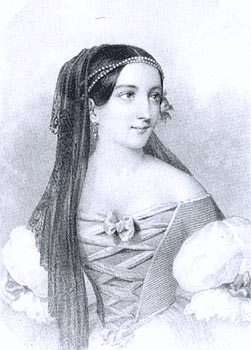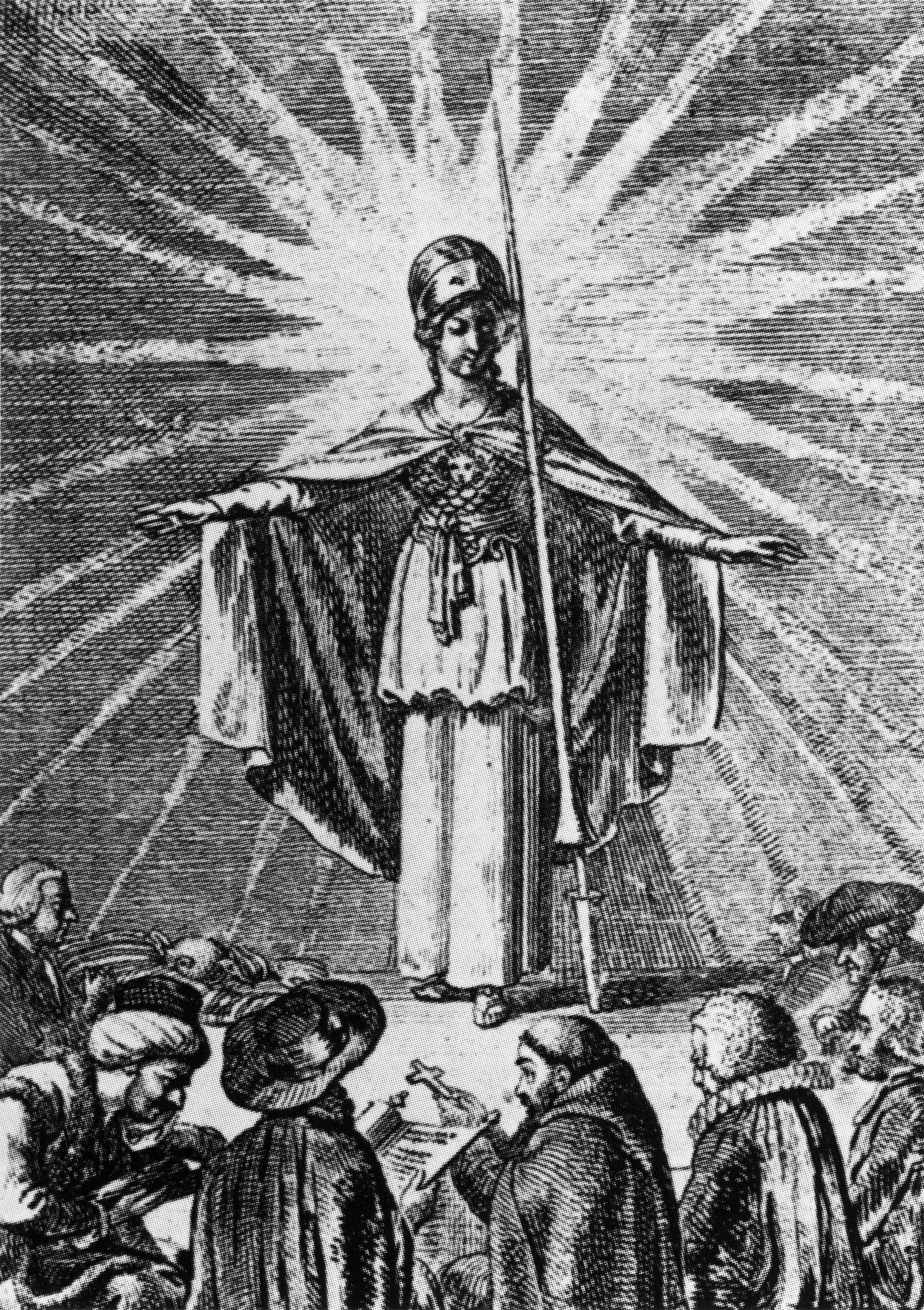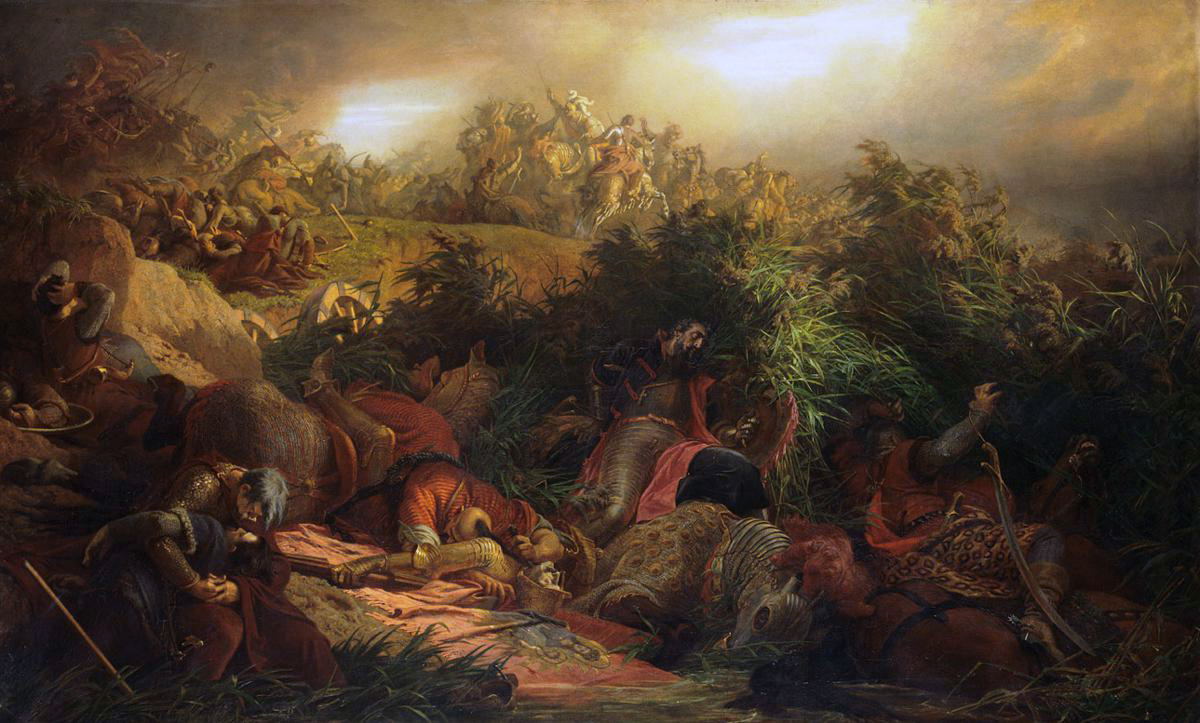|
Isabella Jagiełło
Isabella Jagiellon (; ; ; 18 January 1519 – 15 September 1559) was a princess of the Kingdom of Poland and of the Grand Duchy of Lithuania, and later also the Queen consort of Hungary. She was the oldest child of Sigismund I the Old, King of Poland and Grand Duke of Lithuania, and his Italian wife Bona Sforza. In 1539, she married John Zápolya, Voivode of Transylvania and King of Hungary. At the time Hungary was contested between Ferdinand of Austria who wanted to add it to the Habsburg domains (see Royal Hungary), local nobles who wanted to keep Hungary independent (see Eastern Hungarian Kingdom), and Sultan Suleiman the Magnificent who saw it as a vassal state of the Ottoman Empire (see also Little War in Hungary). While Isabella's marriage lasted only a year and a half, it did produce a male heir – John Sigismund Zápolya born just two weeks before his father's death in July 1540. She spent the rest of her life embroiled in succession disputes on behalf of her son. Her ... [...More Info...] [...Related Items...] OR: [Wikipedia] [Google] [Baidu] |
Lucas Cranach The Younger
Lucas Cranach the Younger (, ; 4 October 1515 – 25 January 1586) was a German Renaissance painter and portraitist, the son of Lucas Cranach the Elder and brother of Hans Cranach. Life and career Lucas Cranach the Younger was born in Wittenberg, Germany on 4 October 1515, the second son of Lucas Cranach the Elder and Barbara Brengebier. He began his career as a painter as an apprentice in his father's workshop, training alongside his older brother, Hans Cranach, Hans. Following the sudden death of Hans in 1537, Cranach the Younger would assume greater responsibilities in his father's workshop. The Protestant Reformation began in Wittenberg in 1517. Cranach the Elder was friends with Martin Luther and became known as a leading producer of Propaganda during the Reformation, Protestant artistic propaganda. In 1550, Cranach the Elder left Wittenberg to join his patron, John Frederick I, Elector of Saxony, in exile. Following his father's departure, Cranach the Younger assumed ful ... [...More Info...] [...Related Items...] OR: [Wikipedia] [Google] [Baidu] |
King Of Hungary
The King of Hungary () was the Monarchy, ruling head of state of the Kingdom of Hungary from 1000 (or 1001) to 1918. The style of title "Apostolic King of Hungary" (''Magyarország apostoli királya'') was endorsed by Pope Clement XIII in 1758 and used afterwards by all monarchs of Hungary. The term "King of Hungary" is typically capitalized only as a title applied to a specific person; however, within this article, the terms "Kings of Hungary" or "Junior Kings" (etc.) are also shown in capital letters, as in the manner of philosophical writing which capitalizes concepts such as Truth, Kindness and Beauty. Establishment of the title Before 1000 AD, Hungary was not yet recognized as a kingdom by the Pope and the List of rulers of Hungary, ruler of Hungary was styled Grand Prince of the Hungarians. The first King of Hungary, Stephen I of Hungary, Stephen I. was crowned on 25 December 1000 (or 1 January 1001 in the proleptic calendar) with the crown Pope ... [...More Info...] [...Related Items...] OR: [Wikipedia] [Google] [Baidu] |
Charles V, Holy Roman Emperor
Charles V (24 February 1500 – 21 September 1558) was Holy Roman Emperor and Archduke of Austria from 1519 to 1556, King of Spain (as Charles I) from 1516 to 1556, and Lord of the Netherlands as titular Duke of Burgundy (as Charles II) from 1506 to 1555. He was heir to and then head of the rising House of Habsburg. His dominions in Europe included the Holy Roman Empire, extending from Germany to northern Italy with rule over the Austrian hereditary lands and Burgundian Low Countries, and Spain with its possessions of the southern Italian kingdoms of Naples, Sicily and Sardinia. In the Americas, he oversaw the continuation of Spanish colonization and a short-lived German colonization. The personal union of the European and American territories he ruled was the first collection of realms labelled " the empire on which the sun never sets". Charles was born in Flanders to Habsburg Archduke Philip the Handsome, son of Maximilian I, Holy Roman Emperor and Mary of Burg ... [...More Info...] [...Related Items...] OR: [Wikipedia] [Google] [Baidu] |
Holy Roman Emperor
The Holy Roman Emperor, originally and officially the Emperor of the Romans (other), Emperor of the Romans (; ) during the Middle Ages, and also known as the Roman-German Emperor since the early modern period (; ), was the ruler and head of state of the Holy Roman Empire. The title was held in conjunction with the title of King of Italy#Kingdom of Italy (781–962), King of Italy (''Rex Italiae'') from the 8th to the 16th century, and, almost without interruption, with the title of King of Germany (''Rex Teutonicorum'', ) throughout the 12th to 18th centuries. The Holy Roman Emperor title provided the highest prestige among Christianity in the Middle Ages, medieval Catholic monarchs, because the empire was considered by the Catholic Church to be Translatio imperii, the only successor of the Roman Empire during the Middle Ages and the early modern period. Thus, in theory and diplomacy, the emperors were considered first among equalsamong other Catholic monarchs across E ... [...More Info...] [...Related Items...] OR: [Wikipedia] [Google] [Baidu] |
Francis I Of France
Francis I (; ; 12 September 1494 – 31 March 1547) was King of France from 1515 until his death in 1547. He was the son of Charles, Count of Angoulême, and Louise of Savoy. He succeeded his first cousin once removed and father-in-law Louis XII, who died without a legitimate son. A prodigious patron of the arts, Francis promoted the emergent French Renaissance by attracting many Italian artists to work for him, including Leonardo da Vinci, who brought the ''Mona Lisa'', which Francis had acquired. Francis's reign saw important cultural changes with the growth of central power in France, the spread of humanism and Protestantism, and the beginning of French exploration of the New World. Jacques Cartier and others claimed lands in the Americas for France and paved the way for the expansion of the first French colonial empire. For his role in the development and promotion of the French language, Francis became known as (the 'Father and Restorer of Letters'). He was also known ... [...More Info...] [...Related Items...] OR: [Wikipedia] [Google] [Baidu] |
Johannes Honter
Johannes Honter (also known as Johann Hynter; Latinized as Johann Honterus or Ioannes Honterus; Romanian sources may credit him as Ioan, Hungarian ones as János; 1498 – 23 January 1549) was a Transylvanian Saxon, renaissance humanist, Protestant reformer, and theologian. Honter is best known for his geographic and cartographic publishing activity, as well as for implementing the Lutheran reform in Transylvania and founding the church, which would become the Evangelical Church of the Augsburg Confession in Romania, after the union of Transylvania with Romania. Education and activity Early life Born in Brassó ''(German: Kronstadt, today Brașov, Romania)'', Transylvania, Kingdom of Hungary, he studied at the University of Vienna between 1520 and 1525, graduating with a ''magister artium'' title. As the Ottomans approached Vienna in 1529 (''see Siege of Vienna''), Honter moved first to Regensburg, and, in 1530, he registered at the Kraków's Jagiellonian University (in Pol ... [...More Info...] [...Related Items...] OR: [Wikipedia] [Google] [Baidu] |
Niepołomice
Niepołomice (pronounced ) is a town in southern Poland, seat of Gmina Niepołomice in the Wieliczka County in the Lesser Poland Voivodeship. It is situated on the Vistula River, on the verge of the large virgin Niepołomice Forest. There is a 14th-century hunting castle in town initially built by Casimir III, as well as a conservation center for European bison () nearby. The town is also home to professional football Football is a family of team sports that involve, to varying degrees, kick (football), kicking a football (ball), ball to score a goal (sports), goal. Unqualified, football (word), the word ''football'' generally means the form of football t ... club Puszcza Niepołomice. 2018 Powiat wielicki, Niepołomice, Zamek Królewski 03.jpg, Hunting castle, exterior 2018 Powiat wielicki, Niepołomice, Ratusz 03.jpg, Town hall Niepołomice Kościół Dziesięciu Tysięcy Męczenników w Niepołomicach A 160 k.jpg, Church of 10,000 Martyrs External links Off ... [...More Info...] [...Related Items...] OR: [Wikipedia] [Google] [Baidu] |
Wawel Castle
The Wawel Royal Castle (; ''Zamek Królewski na Wawelu'') and the Wawel Hill on which it sits constitute the most historically and culturally significant site in Poland. A fortified residency on the Vistula River in Kraków, it was established on the orders of King Casimir III the Great and enlarged over the centuries into a number of structures around a Polish Renaissance courtyard. It represents nearly all European architectural styles of the Medieval, Renaissance and Baroque periods. The castle is part of a fortified architectural complex erected atop a limestone outcrop on the left bank of the Vistula River, at an altitude of above sea level. The complex consists of numerous buildings of great historical and national importance, including the Wawel Cathedral where Polish monarchs were crowned and buried. Some of Wawel's oldest stone buildings can be traced back to 970 CE, in addition to the earliest examples of Romanesque and Gothic architecture in Poland. The current ... [...More Info...] [...Related Items...] OR: [Wikipedia] [Google] [Baidu] |
George Martinuzzi
George Martinuzzi, O.S.P.P.E. (born Juraj Utješenović, also known as György Martinuzzi, Brother György, Georg Utiessenovicz-Martinuzzi or György Fráter, ; 1482 – 16 December 1551), was a Croatian nobleman, Pauline monk and Hungarian statesman who supported King John Zápolya and his son, King John Sigismund Zápolya. He was Bishop of Nagyvárad (now Oradea), Archbishop of Esztergom and a cardinal. Name Since he usually identified himself as ''"Frater Georgius"'', he is known in Hungarian history as ''"Fráter György"''. Early years Most details of Martinuzzi's life before 1528 are uncertain. He was the youngest son of a Croatian lesser nobleman, Grgur Utješenović, and Anna Martinuzzi, who was descended from a Venetian patrician family. He was born in Kamičak Castle, near Skradin, on 18 June 1482. On the father's side, he is originating from a Hungarian noble family (Fráter from Dobra genus). His grandfather was András Mátyok-Kézi. He was still a child ... [...More Info...] [...Related Items...] OR: [Wikipedia] [Google] [Baidu] |
Freedom Of Religion
Freedom of religion or religious liberty, also known as freedom of religion or belief (FoRB), is a principle that supports the freedom of an individual or community, in public or private, to manifest religion or belief in teaching, practice, worship, and observance. It also includes the right not to profess any religion or belief or "not to practice a religion" (often called freedom ''from'' religion). The concept of religious liberty includes, and some say requires, secular liberalism, and excludes authoritarian versions of secularism. Freedom of religion is considered by many people and most nations to be a fundamental rights, fundamental human right. Freedom of religion is protected in all the most important international human rights treaty, conventions, such as the United Nations International Covenant on Civil and Political Rights, the American Convention on Human Rights, the European Convention on Human Rights, and the Convention on the Rights of the Child, United Na ... [...More Info...] [...Related Items...] OR: [Wikipedia] [Google] [Baidu] |
Little War In Hungary
Little is a synonym for small size and may refer to: Arts and entertainment * ''Little'' (album), 1990 debut album of Vic Chesnutt * ''Little'' (film), 2019 American comedy film *The Littles, a series of children's novels by American author John Peterson ** ''The Littles'' (TV series), an American animated series based on the novels Places *Little, Kentucky, United States *Little, West Virginia, United States Other uses *Clan Little, a Scottish clan *Little (surname), an English surname *Little (automobile), an American automobile manufactured from 1912 to 1915 *Little, Brown and Company, an American publishing company * USS ''Little'', multiple United States Navy ships See also * * *Little Mountain (other) * Little River (other) *Little Island (other) Little Island can refer to: Geographical areas Australia * Little Island (South Australia) * Little Island (Tasmania) * Little Island (Western Australia) Canada * Little Island (Lake Kagawong), Ontario ... [...More Info...] [...Related Items...] OR: [Wikipedia] [Google] [Baidu] |
Suleiman The Magnificent
Suleiman I (; , ; 6 November 14946 September 1566), commonly known as Suleiman the Magnificent in the Western world and as Suleiman the Lawgiver () in his own realm, was the List of sultans of the Ottoman Empire, Ottoman sultan between 1520 and his death in 1566. Under his administration, the Ottoman Empire ruled over at least 25 million people. After succeeding his father Selim I on 30 September 1520, Suleiman began his reign by launching military campaigns against the Christendom, Christian powers of Central and Eastern Europe and the Mediterranean; Siege of Belgrade (1521), Belgrade fell to him in 1521 and Siege of Rhodes (1522), Rhodes in 1522–1523, and at Battle of Mohács, Mohács in 1526, Suleiman broke the strength of the Kingdom of Hungary in the Middle Ages, Kingdom of Hungary. Presiding over the apex of the Ottoman Empire's economic, military, and political strength, Suleiman rose to become a prominent monarch of 16th-century Europe, as he personally led Arm ... [...More Info...] [...Related Items...] OR: [Wikipedia] [Google] [Baidu] |





